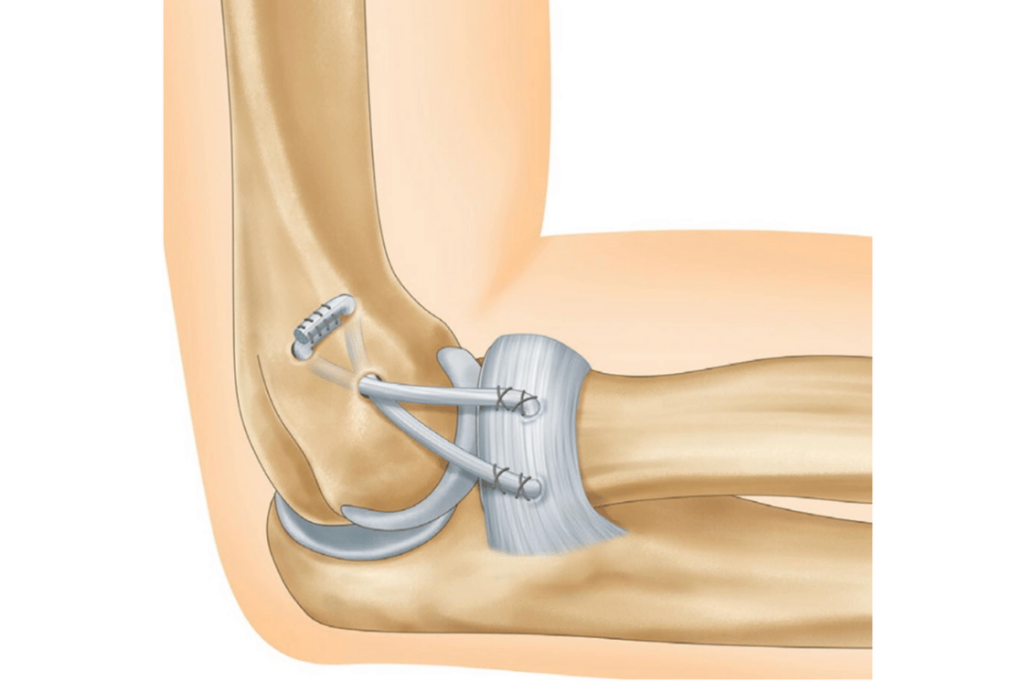Elbow instability is a condition where the elbow joint becomes loose and prone to dislocation as a result of damage to the connective tissues (ligaments) that hold the joint together. It can develop due to trauma or after repetitive strain. Instability manifests with symptoms such as a sudden feeling of displacement, insecurity, pain, and a clicking sound during movement.

One of the most important structures that keep the elbow stable is the Ulnar Collateral Ligament (UCL) and the Lateral Collateral Ligament (LCL) complex. Especially in athletes (e.g., baseball, tennis, wrestling) or individuals who carry heavy loads, these structures can be strained, leading to partial or complete tears.
In the early stages, control can be achieved with rest, splinting, and physical therapy. However, surgical intervention is necessary for patients presenting with recurrent dislocations, traumatic ligament tears, or a persistent feeling of looseness. Surgical treatment involves the repair of the damaged ligament or its reconstruction using a suitable graft (tissue). Surgery restores elbow stability and prevents loss of function.

Surgery Duration: 60–90 minutes
Anesthesia Type: General anesthesia or nerve block (regional anesthesia)
Surgical Method: Open surgery; ligament repair or reconstruction with a graft
First day: 4–5
First week: 3–4
After the 2nd week: 1–2
Typically a 1-night hospital stay.
First 2–3 weeks: The arm is immobilized with a splint
3rd–6th week: Gradual passive and active movement begins
6th–8th week: Light exercise and strengthening
3rd month: Return to daily life and work
4th–6th month: Return to sports and strenuous arm activities
First dressing change: 2nd day
Wound check: 1st week
Suture removal (if necessary): 10th day
Yes, in cases of partial tears, but surgery is necessary for complete tears or recurrent dislocations.
With correct surgery and rehabilitation, a functional and stable elbow is achieved in most patients.
The elbow joint is prone to stiffening (contracture). Early and regular exercises are critical to prevent functional loss. It is especially important after the 3rd week to maintain the range of motion and increase muscle strength. Most of the time, the exercises we give our patients are sufficient and safe for them to perform on their own. If it is determined during follow-ups that the expected range of motion is not being achieved, help from physical therapy may rarely be sought.
Yes, but it is important to adhere to the recovery process. Sports activities can usually be started from the 4th month onwards.
The surgical incision is usually made on the outer or inner side of the elbow. After healing, it does not leave a scar that is cosmetically bothersome.